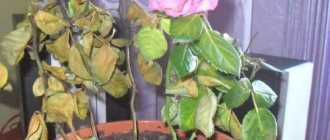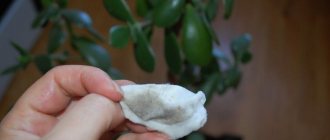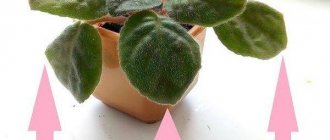Indoor violets are especially popular and loved among flower lovers:
- Many types and varieties;
- Amazing color options;
- Very compact plants allow you to have more than a dozen of them;
- Affordable prices;
- Conditions of care and maintenance are quite feasible in an apartment;
- They reproduce well and easily.
Features of caring for Saintpaulia at home
It is important to know and take into account the natural and varietal characteristics of Saintpaulia. It is not for nothing that many flower growers claim that violets are unpretentious . Compare them with other colors. Create optimal conditions. And they prove this with their beautiful collections of many blooming violets.
Care recommendations should not be ignored . And it’s also good if mistakes can be corrected without serious consequences for the plants (adjust temperature, watering, light). And they will bloom profusely again.
It is worse in cases where it is not possible, even with the efforts and measures taken, to preserve Saintpaulia. And they die. For a dead plant, it no longer matters whether it happened due to ignorance or negligence!
We will talk further about why the violet dies and what to do to prevent this from happening.
What to do if the violet fades
To find the cause of plant wilting, you will need to eliminate all factors one by one. We will have to reconsider everything: watering, maintenance conditions, fertilizers, and check the flower for pests.
Sometimes, after adjusting the care rules, the violet returns to normal. If, in your opinion, you are doing everything right, and the Saintpaulia continues to wither, replant it in fresh soil and a new pot.
By the way, a pot that is not the right size can also be the reason for the flower’s poor health. Read more about how to select pots for violets here.
Do not forget also that Saintpaulia needs annual replanting. If this is not done, it may stop blooming and will wither over time.
If the violet withers and no action can return it to its former healthy appearance, do not be discouraged. Remove all drying leaves and cut the rosette at the root. Place it in water and wait for it to sprout new roots, then transplant it into a pot. Perhaps this is how you will be able to save the plant.
Causes of death of violets
Look for the reason why violets are dying at home. And it is better to detect it in the early stages. So as not to state that the plant is missing.
Here are the most common reasons why indoor violets die:
- Problematic watering: Overflow;
- Overdrying of the soil;
- Unevenness.
- Prolonged extreme temperatures: Below 15-16 degrees;
- Above 26-27 degrees.
- Heavy with poor aeration and water permeability;
- High humidity in cool weather;
- The appearance of pests.
Watering problem
Perhaps the main reason why violets die in an apartment is watering. You have to be careful with him. Without proper watering, violets bloom poorly . And growth is slow.
But improper watering becomes a real disaster for Saintpaulias. With excess moisture, even a high-quality substrate turns into a wet earthen lump. The roots become soaked and begin to rot. This condition contributes to the appearance of various diseases. And even the death of plants.
Uneven watering will create extreme situations for plants.:
- They overwatered it (the roots become soaked and rot);
- Then the soil dried out (young roots dry out).
This does not in any way contribute to the growth and preservation of roots. And ensuring adequate nutrition for the plant.
Inappropriate temperature
Each variety of Saintpaulia has some . But there is also something in common:
- There will be problems with growth, flowering and disease. If the room temperature is uncomfortable for violets . And this: Less than 15-16 degrees;
- More than 26-27 degrees.
- Most violets can withstand short-term surges. But for a long time it will be the cause of adversity. And undesirable consequences;
- It is difficult in winter and hot summer conditions to prevent maximum jumps. And it’s not so easy to determine exactly where the limit is permissible and long-term. But the decisions are up to you;
- Window sills are often used to place violets. Don't lose sight of possible drafts . Many violets have already suffered from them.
Direct sunlight or lack of lighting
- Beginners often mistakenly determine the place in the apartment for Saintpaulias. And set them in the sun. And prolonged exposure of violets to direct sunlight (especially on hot days) is simply destructive ;
- There will be no benefit from places where there is little light . In summer there is enough of it. Daylight hours provide this. And in winter it is clearly not enough. Not just for flowering. For normal growth and bud formation as well.
Important! Illumination should be at least 12 hours a day.
Ground problems
It is not difficult to guess that there are problems with the soil. The plants themselves tell you. You just need to inspect it periodically. Withering and lack of turgor.
A white coating on the soil and rapid loss of moisture will confirm an excess of salts. Passion for fertilizing and excess fertilizers does not lead to a positive result. Each period has its own elements. Excess of any of them only harms.
Soil acidification is directly related to the overcooling of the substrate.
Harmful insects or diseases
If violets die, the reasons may lie in the appearance of diseases. It is not so rare that this is due to miscalculations in creating optimal conditions for them.
Diseases may appear with new specimens in your collection. In most cases, from the soil you use to grow violets.
Spores and mycelia are very tenacious and survive in any soil. Whatever preventive measures you take (calcination, etc.).
Dangerous and harmful pathogens in the soil are helped to develop:
- Improper watering;
- Humidity at low temperature;
- Drafts;
- And pests of violets.
You cannot always immediately see harmful insects Due to their small size. Yes, and some are located inside plants:
- The most dangerous : Nematodes;
- Strawberry mite;
- Thrips.
- It is not so difficult to detect visually and by tracks on plants other insects: Aphids;
- Spider mite;
- Scale insects;
- Whiteflies;
- Mealybug.
- Many insects can still be distributors and carriers of diseases.
Other reasons why a violet in a pot dies are dangerous fungal and bacterial diseases . They are the ones that most often lead to plant death:
- Rot of leaves, roots and stems is the most common. Brown, root and gray. Infectious diseases;
- Powdery mildew is easily identified due to the appearance of a white coating on the leaves. How they sprinkled it with flour. Both young and old plants are affected (especially after flowering);
- Fusarium is dangerous for weakened plants. It is often discovered at such stages that it is difficult to treat. A characteristic sign is the appearance of brown spots on the leaves. It starts from the roots, then the leaves and stem are affected. The flower must be immediately removed from all plants;
- Late blight also spreads very quickly. And it does a lot of harm. The plant may die in 3-4 days. Infected planting material and soil are the main causes. With excessive watering and low temperatures, the disease can also affect neighboring bushes.
Types of powdery mildew, prevention and treatment methods
Downy and true powdery mildew are common causes of death of indoor violets. Both diseases are fungal in nature. In the case of powdery mildew, the causative agent is powdery mildew (Erysiphales). Downy mildew is caused by Peronosporaceae fungi, a family of Peronosporaceae.
Powdery mildew
Powdery mildew
You can understand that a violet is sick with powdery mildew at the initial stage of the disease. A light coating of white on the leaves and petioles should alert you. It looks like the plant has been lightly dusted with flour. The progression of the disease is accompanied by damage to all parts of the plant by ulcers. The leaf surface becomes uneven.
Trending Wisteria for the middle zone: dreams come true!
At the final stage, there is a general depression of the violet: it stops growing, weakens, and dies. There are many causes of powdery mildew infection. Most often, the fungus multiplies on flower plants that are weakened due to poor care. Powdery mildew is caused by excess nitrogen in the soil. Possible routes of infection:
- from another diseased plant;
- fungus-infected soil;
- a dirty, contaminated instrument used for transplanting and propagation.
Treatment
At the first signs of illness, begin treating the diseased violet. First, inspect the flower, pinch off all damaged leaves. Treat the soil and leaves with a fungicide. Fundozol and Topaz are suitable for processing violets. These fungicides do not damage delicate leaves; the spray solution should be slightly warm. Place the violet in a warm, dark place. Keep it in the dark until completely dry. This measure will prevent sunburn on the leaves.
Prevention
Monitor the balance of nitrogen, potassium and phosphorus in the soil. Use fertilizers with a high percentage of potassium and phosphorus to feed the flower. Before transplanting (planting) violets, treat the soil with a fungicide:
- Previkur;
- Infinito;
- Thanos.
Downy mildew
Downy mildew
Treatment and preventive measures are the same as for powdery mildew. Signs of the disease differ:
- the first stage is a silvery or white coating on the bottom of the leaf blade;
- second stage - spots on the upper surface of the leaves, the color of the spots is light green, brown, reddish;
- third stage - if left untreated, the flower dies.
Important to remember! High humidity accelerates the course of the disease and promotes the spread of downy mildew.
How to save a plant?
We must do everything possible. To prevent this from happening.
From overflow or problems with the soil
Timely detection of the causes of violet wilting is a serious step towards saving the plant. Or maybe we can’t do without radical measures.
What to do if a violet dies from overwatering? Assess the condition of the soil. Whether a complete change and removal of the remnants of the old is necessary is up to you to decide. But in many cases it is changed completely.
After all, moisture stagnation does not form just like that :
- Excess water can be removed in simple ways: Slightly press the sides of the container;
- Place a paper or soft cloth napkin in the tray. Change when wet.
- Getting wet can also help. Using the same napkins: Place a ball of earth on them. Change when wet;
- Remove damaged roots;
Replanting with complete soil replacement
There are many plants that do not really like transplanting. Even painful. Violets are not one of these. And lovers of these flowers know this. When raising children, 2-3 transplants are only beneficial :
- Why they need to be replanted : The root system grows with good care. The condition of the soil decides a lot. There is not so much of it in the pot;
- It thickens, salts appear, and the acidity level decreases. No matter how you fertilize or water, there will be no benefit. It needs to be replaced;
- If the plant is affected by any disease or pests have infested it - completely. And with appropriate processing.
- If you don’t have enough time to prepare the soil, you can purchase one special for Saintpaulias;
- Nutrient soil and high-moor peat – half;
- Second : Nutrient soil – 70%;
- Moss, perlite (vermiculite), charcoal – 30%.
Important! Vermiculite helps loosen the soil and moderate its acidity.
- Prepare the pot . It must be clean and have sufficient drainage holes. For prevention, disinfect with the same potassium permanganate;
- Lay drainage. These can be small pieces of foam or expanded clay. Clay shards and walnut shells. It is good drainage that will prevent the roots from getting wet;
- The transplant itself : Lightly water beforehand. With a damp ball it is easier to free the roots without damage;
- Clean the roots from dry and damaged ones;
- Treat them with a fungicide (and insecticide if necessary);
- Pull the cord (wick) through the hole in the bottom. If you are using wick watering;
- Lay down a thin layer of vermiculite. And on top there is drainage;
- Pour in soil mixture;
- Place the violet. Spread out the roots;
- Add soil. Lightly compact with your fingers. Tap the sides of the pot to allow the soil to settle;
- The root neck of the plant should be 1-2 cm higher than the edges of the pot (cup);
- Water lightly. The soil will subside a little. Add soil (if necessary);
- You can even cover the potted plant with a plastic bag for 5-7 days.
How to make sure the soil is of good quality:
- Specialized stores sell testers or indicator paper;
- Take a small amount of prepared soil and water it lightly;
- After a few minutes, immerse the indicator paper in it (for only 2-3 seconds);
- Compare its color with the scale;
- The proposed options for earth mixtures are just slightly acidic: If you pour vinegar on such soil and bubbles form, that’s also normal;
- And also believe the composition written on the package. And its suitability for planting violets.
When damaged by harmful insects
The appearance of pests cannot always be prevented. Even under good conditions and proper care. And the harm from them is different:
- First and most importantly, isolate plants with pests from healthy flowers ;
- Plants are needed destroy when nematodes are detected. Both root and leaf:
A sure sign is the appearance of thickenings (galls) on the roots and leaves. The plant does not bloom, it is depressed. Light green spots appear. They turn brown and rot; - The variety can only be saved by cutting off healthy leaves without spots. For further rooting.
- Other insects can be fought and saved using available means ;
- To combat thrips and scale insects, systemic insecticides are effective.
Attention! Try to use chemicals last. And in separate rooms. Consider the fact that you may also have representatives of the animal world in your apartment (cats, dogs, birds, fish).
In apartment conditions, flower growers quite successfully use various infusions and decoctions of herbs and plants . They are not dangerous to humans. And quickly lose toxicity:
- Even marigolds are repelled from aphids;
- From poutine mites and aphids: Onion peel;
- Horseradish;
- Garlic;
- Chamomile;
- Dandelion;
- Red capsicum;
- Tobacco.
For various diseases
Disease doesn't just appear. But it can also be determined visually. And it is necessary. To choose the right paths and methods of treatment:
- Take a close look at your other pets. Isolate the plant from others . So that the disease does not spread to them;
- With the plant itself: Remove the plant from the pot . Shake off any remaining soil;
- Remove all affected parts (roots, cuttings and leaves). Cut to green tissue. Assess what's left of the plant;
- You can use cut good leaves for propagation;
- Treat the plants with a fungicide (Fundazol, Maxim, Fitosporin);
- Plant in small plastic cups for germination. After drying, place them in a greenhouse (or cover with a bag for 3-5 days).
Important! You can use other methods to germinate and root such violets:
- rooting in cups of water;
- rooting with sphagnum moss.
Determine for yourself a set of measures to prevent diseases. To minimize their occurrence:
- Don't buy the plant. If there is an assumption about his unhealthy condition. Better buy a leaf;
- Place newly purchased flowers with others after quarantine or treatment with drugs (for diseases and pests);
- Choose a place with optimal temperature and lighting;
- Carry out treatments to strengthen the immune system;
- Select and prepare the soil carefully. Steam, freeze, pour potassium permanganate;
- Do not place pots tightly together. Air circulation will be inadequate;
- Treat pots and containers for planting Saintpaulia. Especially previously used ones;
- Select optimal watering regimes:
Use safe practices and clean tools; - No overwatering or drying out of the soil. They are different in summer and winter;
- Use warm and settled water.
- With a complete change of soil and selection of the pot according to size;
- Cold nights and temperature changes;
Important! Flowers brought from your garden may be a source of disease or pests.
If flowers and peduncles die
Lots of flowers on peduncles - this is what every violet lover strives for. If this is the case, then you have created good conditions for your plants. And enjoy their flowering.
Their unattractive appearance and wilting indicate problems with care:
- Or maybe they just forgot to water ?
- Or did they not close the curtain in time and they were under the scorching sun ?
We need to figure out the reasons. Eliminate them. Maybe the flower stalks won’t need to be removed.
After abundant flowering
The abundant and long flowering of violets pleases:
- This is what worries flower growers with experience. They know of more than one case of plant death. After such euphoria. The plant expends too much energy to provide it;
- Replanting just allows you to thoroughly inspect the plant and prepare it for new flowering: Replace the soil with high-quality one. It is recommended to use it for no more than a year. Yes, and replant violets with such frequency.
- Many violets lose turgor for some time after transplantation. Some gardeners even place them in greenhouses for restoration. And they begin to feed after new leaves begin to grow.
What to do if you can’t save the whole flower?
If there is a possibility that the plant can be saved, that’s good. But after inspection, pruning of damaged and dry leaves and roots, other situations occur. It is important to preserve the variety .
What flower growers offer:
- Cut out healthy leaves for rooting . Trim properly (leave 3-4 cm of cuttings). And root it in a convenient way for you. Not fast, but effective;
- Cut all the roots back to the living. Remove old leaves. Root the violet head .











